| Mr. Robert Marriott, who was born on 4th December 1865, founded the company in 1890. A tribute was paid to him by an eminent architect, Professor Sir Albert Richardson, P.P.R.A. who said, ‘He was a master builder of the calibre of Grimbolds and other famous countrymen. He spared no pains and placed ultimate good before financial gain . . . deep in his make-up was the spirit of Old England and its proven craftsmanship.’ He died in 1948 but there was no break in the continuity of the company’s affairs. |
|
A profile by an ex-employee stated that Robert Marriott was a farmer, master builder and bricklayer by trade. He usually wore tweed suits, soft trilby or duck-shooter hat and highly polished brown shoes or boots. He had a resonant voice and so was easily recognised. He usually addressed employees as "chappie" or "laddie" and was known respectfully as "the old man". He appeared to be hard but in fact was extremely fair. Any labourer applying for a job would be asked. 'Can you carry on the head? Can you use a hod? Can you scaffold? Can you drainlay? Can you excavate?'
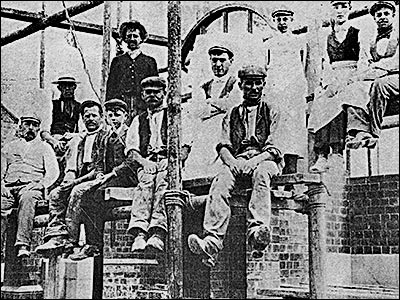 |
|
Marriott's Workers 1903
|
|
If the answers were yes he would set him on at 11d an hour, good labourers at 1 shilling per hour. He still ran his farm and would send labourers with a pick and shovel to make hay. He would properly train his apprentices and would not allow an apprentice to do a labourers job. He always tried to keep men on for the six weeks before and after Christmas when most firms put them on the dole. In the early days, as in most work places, there was no wet money, tool money, holiday pay, bonus incentives, protective clothing, safety at work, concrete mixers or power tools. Heavy materials were delivered to the Railway Station and collected by horse and cart. Concrete was mixed by hand and there were lime pits for plasterers. Originally, Marriotts had their own plasterers, painters, plumbers, carpenters, masons, roof tillers, wall tillers, floor tillers and blacksmiths. |
Another ex-employee stated that the building Trade was picking up in 1937/38 with sites appearing all over the country. When the war broke out all private building was stopped and practically all domestic and industrial work dried up so it was difficult to maintain an effective work force. Mr. Alan Marriott and Mr. Philip Dickens went into the Army leaving Mr. J.A. Beale in a managerial and estimating capacity. Mr. Robert Marriott, although now in advanced years, was fully occupied in co-ordinating and general overall supervision. The main source of work in the war was for the War Department establishing facilities on Army camps and billets and maintenance and most orders come from D.C.R.E. at Northampton. A proportion was contractual but most urgent cases were on a daywork basis.
| It was a very difficult period but this was a regular source of work ensuring a steady and reliable cash flow which kept the firm in business. At the end of the war Mr. Robert Marriott brought in Colonel J. Marriott to reorganise and prepare the firm to meet post war demands. With the return of Major Alan Marriott and S/S Philip Dickens from the services, with their wide experience of the building trade, the situation was created and established for expansion of the firm for the future. |
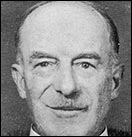 |
|
Major Marriott
|
|
After the second World War more emphasis was placed on building houses and industrial plants. To meet these ends the company was built up so that it was more versatile, efficient and geared to high speed construction. Everyone from the managing director to the men in the yard was instilled with a spirit of admitting no difficulties or delays and with a pride in achievement and, most important, building up a team spirit. This spirit also encompassed the suppliers and sub-contractors who soon realised that any Marriott’s schedule would be adhered to rigidly, delays were not allowed. Top priority was given to pre-planning, sound organisation and site efficiency. This policy soon had an effect. Marriotts gained a reputation for high-speed building and as one project followed another so that reputation grew. A £200,000 school in Aylesbury was built in 12 months to the day; a £100,000 office block in Leicester was completed in similar time, while a 440,000 Luton College of Technology project was carried out in half the time originally envisaged. These are just examples; there are many other similar jobs and they are all a direct result of the policy underlying the planned build-up of the organisation. The policy that led to the establishment of the phrase ‘Marriott build fast’, not as a myth, but as a fact proven in bricks and mortar.
Other Projects
£1,000,000 Bucks County Council Offices. This was a 16 storey office block with a library block.
£1,500,000 Air Ministry Housing, Lakenheath. Four hundred and eight high quality houses for the United States’ Air Force personnel.
£700,000 Borocourt Hospital near Reading.
 |
|
Cigarette Components Office Block
|
|
£220,000 Cigarette Components Factory. A 72,000 sq.ft. factory and an 8,000 sq. Ft. office building. |
£1,000,000 R.A.F. Housing, Wyton. Forty six married officers quarters, two hundred and sixty seven airmen’s married quarters and sixty seven garages.
£320,000 Runcorn Belvedere Development. A thirteen storey block of flats with two storey accommodation for old people. Also a £220,000 extension to the Runcorn Town Hall.
£500,000 Northants County Council Serial Contract. Construction of seven schools and other buildings.
£350,000 Dane Park and Dane Acres Development. Forty high quality houses in Bishop’s Stortford.
£250,000 Wellingborough Technical College.
Milton Keynes City Church with a lead octagonal dome and accomodation for a mixed denomination congregation of 575 and an adjoining office development of two mirror image L shaped buildings, each of 4000 sq. Metres.
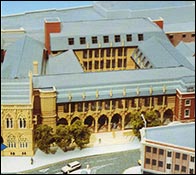 |
|
Northampton Guildhall
|
|
Northampton Guildhall Extension comprising of a basement car park, public areas and offices on five floors along with alterations to the existing Guildhall, designed in traditional nature with stonework on the front elevation to match the existing Guildhall. |
A £7 million housing contract for 2,200 families by Milton Keynes Builders Ltd., a member of the Marriott Group.
£400,000 factory built in Wellingborough
By 1990 contracts totalled an annual excess of £50m million. In its first hundred years Marriotts had built more than 10,000 houses and over 100 schools plus dozens of welfare centres, libraries and old people’s homes.
| A new headquarters was built at the Midland Works, Higham Road, Rushden, a two acre site which included head offices, transport and plant department, joiners shop, plumbing, painting and blacksmith’s departments. A certain amount of private development was undertaken through their wholly-owned subsidiary, Kintsfast Investments Ltd. which was concerned with developing housing estates. There were 800 direct employees and taken together with sub-contractors and site labour the total was about 1500. The had about 100 vehicles including cars, coaches, vans, lorries and large articulated vehicles. |
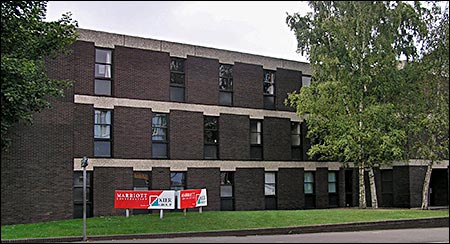 |
|
Marriott's Headquarters
|
|
The primary business of the company was the building of projects between £100,000 and £2 million. There was also a flourishing Small Works Department carrying out lesser projects; a Northern Division based in Huddersfield. The policy of the company was to concentrate on contracts within a 70 mile radius of Rushden, with larger projects at a greater distance. The Northern Branch Office was developing in Yorkshire, Lancashire and Cheshire.
Marriotts had plant costing over £300,000 including mixers, dumpers and excavators. In the previous 12 months more than £75,000 had been invested in new plant and equipment.
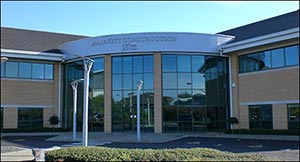 |
|
The New Headquarters 2008
|
|
Marriott Construction is now part of Kier Group PLC and the new headquarters are at Marriott House, Brindley Close, Rushden. |
Some of the Strange Reported Incidents over the Years
Beer bottles were found in the roof of Rushden Park Baptist Church built by Marriotts in 1904.
When some Marriott’s men were lodging in Edmonton in the 1930s one worker paid his rent on the dot every Friday evening. After a few weeks the landlady called the Police as she thought he was pinching the money, she had never been paid so promptly before.
Woburn Abbey 1979. A red van was charged at by an irate stag whose antlers went right through the door and side panels.
In the early days of transporting workmen daily one driver kept a bag on the end of a rope in his vehicle as he had to stop on the way to get water from a brook to fill his radiator.
A bricklayer was sent to a farm to build some cow sheds. He sent his apprentice out in the field with a 10 foot rod to measure some cows to make sure the sheds would be the right size.
When asked how high a step should be one of the bosses would lift his foot up and say ‘about so high’.
A painter had to cycle to Rushden with two large tins of paint on his handlebars. He was 3 minutes late and the Foreman stopped him a quarter of an hour’s money.
|
Article by Col. J. R. Marriott F.I.O.B. on the 75th Anniversary
|
|
This year the company is 75 years old and coincidentally it is the centenary of the birth of its founder, my father the late Mr. Robert Marriott, who was born on the 4th December, 1865. Thus this year marks a significant milestone in the progress of our enterprise.
However, I believe that the importance of the occasion lies not merely in an arbitrary matter of dates. Rather it lies in two things. First it is only the good things in any field – art, music, industry etc. – that survive the acid test of time. This we have done, and consequently it is a testimony to our policies and our work that each year we have gone from strength to strength. Secondly, and in parallel, this constant record of successful building is a tribute to the men, past and present, who have worked for the company and made it what it is.
Today the yardstick of a good firm of building contractors lies not merely in size, resources and plant, nor yet in the quality of work alone. The real criterion is in the ability to lay down a fast, economic schedule of construction, and then adhere to it. This is the basis of building something far more important than any one edifice – it means building a reputation: the reputation for integrity and keeping one’s word.
Since the very outset this principle of keeping faith with the architect and the client has been a fundamental in the policy of Robert Marriott Limited. Allied to this was the high standard of quality laid down by the founder who would never compromise with second-rate work.
In the early days my father established a reputation for fine work. Indeed many old buildings which form part of our heritage in the Midlands feature the results of the craftsmanship and skill of Marriott workmen. As examples one may quote the internal alterations and repairs to Hatfield House, work on the restoration of Long Melford Hall in Suffolk and, more recently, the oak panelling in Barnwell Manor, the home of the Duke and Duchess of Gloucester.
So the reputation of Robert Marriott Limited was born: born of the genius of the company’s founder to thrive on the loyalty and skill of its craftsmen. At the same time the pattern of success was established in the relationship between management and men, the key being fairness which at all times must be mutual.
Naturally it is also a matter of considerable gratification to me personally that in an era of business changes there has been continuity in the family nature of the company. Here I should like to pay particular tribute to my late brother, Major R. A. Marriott, who preceded me as chairman of the firm. Not only did he devote some forty years to the company, but he also played an important role in the civic affairs of Higham Ferrers. Today his sons are on the Board of Directors and, with my own son, we have three members of the third generation of the family in the firm.
|
|